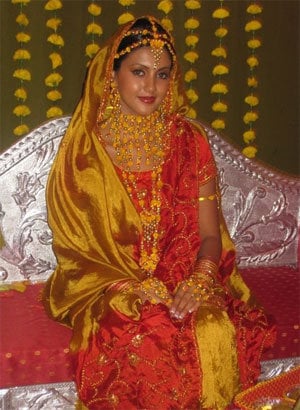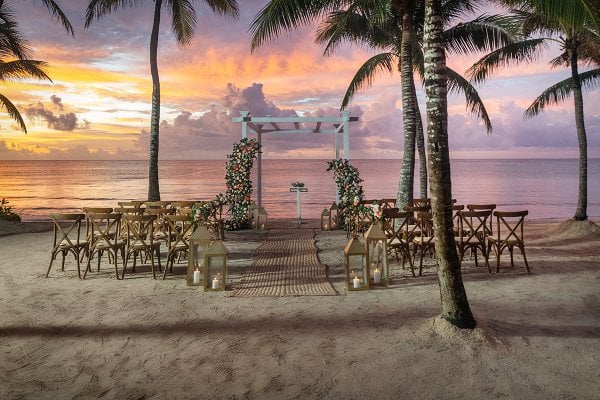Most brides can't wait to pick out their wedding dress and our bride is no exception. She gives us a rundown of what she's wearing on the big day.
By: Jennifer ChowdhuryIn my last post, I told you guys all about the exotic (and expensive!) bridal jewelry South Asian brides wear. So, now comes my favorite part—the clothes!
The first thing I did after I got engaged was to immediately start dress shopping. I knew exactly what I wanted, but the problem was, I had never seen my dream dress in real life, although I’ve had an image stuck in my head for years. I was determined to find it, even if I had to custom design it! As luck would have it, I found my wedding-day outfit on my first shopping trip, so things were off to an amazing start. South Asian weddings are perfect for shopaholics like me, because there are so many different events to dress up for and each event requires a different type of outfit. Bengali weddings are all about themes! Here's a rundown of all the beautiful outfits that are part of my wedding trousseau:
|
|
Gayer Holud Sari: As I’ve previously explained, the gayer holud is a pre-wedding ceremony during which turmeric is applied to the bride for good luck and to help cleanse and tone her skin. To symbolize this, the bride wears a yellow, orange or red sari. A traditional gayer holud sari, usually a Jamdani (a fine, cotton muslim that is handwoven in Bangladesh) or Kathan (silk) material. The look is completed with jewelry made of fresh flowers such as roses and marigolds. In Bangladesh or Calcutta, these are easy to find, but in New York City—not so much. But, you can order this jewelry from Bangladesh or India and they make it with faux flowers that look real. For example, can you tell that my friend Salina is wearing fake flowers in this picture?
Bridal Sari or Lehenga: Traditionally, a Bengali wedding outfit is a heavy embroidered red sari. But, times have changed and many brides opt to go for less traditional looks and alternative colors such as gold, orange, pink, even blue!—or a mix of a few colors. My wedding sari is a pretty purple color—which is a little offbeat and untraditional (I would love to include a picture, but wouldn’t want to spoil the surprise for my wedding guests!) An ornate "oorna" (veil) covering the bride’s head completes the bridal look. A lehenga—a three-piece gown consisting of a short or long top, long full skirt and scarf—is also a very popular choice nowadays. It’s originally an Indian (not Bangladeshi) tradition, but lehengas are considered the modern option since they're usually more form-fitting.
Boubhath Sari or Lehenga: Saris or lehengas are also worn during a reception and the look is more relaxed. An "oorna" is optional for the boubhath.
The outfits and jewelry make up a big chunk of all the gifts I get as part of my trousseau, but I also get matching shoes, makeup, perfume, purses, lingerie and anything else I need during the wedding.
Most of my trousseau shopping is done, so it’s on to the next wedding biggie— flowers! I have to admit that I am clueless about flowers, so I’ve talked to some experts about what would work best for my November wedding. Look out for some great fall flower options in the next installment of My Big Fat Indian Wedding!



